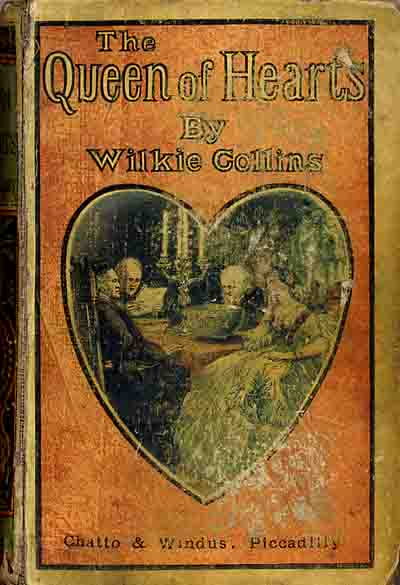Viewing: Blog Posts Tagged with: 1859, Most Recent at Top [Help]
Results 1 - 2 of 2
How to use this Page
You are viewing the most recent posts tagged with the words: 1859 in the JacketFlap blog reader. What is a tag? Think of a tag as a keyword or category label. Tags can both help you find posts on JacketFlap.com as well as provide an easy way for you to "remember" and classify posts for later recall. Try adding a tag yourself by clicking "Add a tag" below a post's header. Scroll down through the list of Recent Posts in the left column and click on a post title that sounds interesting. You can view all posts from a specific blog by clicking the Blog name in the right column, or you can click a 'More Posts from this Blog' link in any individual post.
The Semi-Detached House. Emily Eden. 1859. 172 pages. [Source: Bought]
"THE only fault of the house is that it is semi-detached." "Oh, Aunt Sarah! you don't mean that you expect me to live in a semi-detached house?" "Why not, my dear, if it suits you in other respects?" "Why, because I should hate my semi-detachment, or whatever the occupants of the other half of the house may call themselves." "They call themselves Hopkinson," continued Aunt Sarah coolly.
I very much enjoyed reading Emily Eden's The Semi-Detached House. This Victorian classic is fun, lively romantic comedy. Readers get to know Blanche, the heroine, and her neighbors well. What do we know about Blanche? Well, she's relatively newly wed--she's expecting her first child--and she's a little too imaginative for her own good. She's always worrying about a thousand things that might go wrong. Her husband will be away from her for three months or so--and she's distraught, as you can imagine. (Having her sister, Aileen, live with her will help.) She knows nothing about her neighbors, and, her neighbors know nothing about her. They will suffer through false impressions at first before becoming very close friends. What do we come to learn about their neighbors? Well, it's a mother and her two grown-daughters. (The daughters are Janet and Rose). (The father, I believe, is a sailor so he's often away at sea.) They are also raising a little boy (grandson, nephew). They still are in very close contact with the boy's father (the son-in-law/brother-in-law) who is a widower "lost" in grief. (His name is Mr. Willis). He's one of the comic figures of the book. Readers also become acquainted with the neighborhood or community...
Quotes:
"Then the girls have won," said John, "for you are certainly going–I promised Arthur that I would bring you." "Oh, John! How could you? I can't dine out, I'm so fat." "Well, my dear, you can hardly expect to be as slim as you were at seventeen, but you are not half the size of your friend the Baroness; and this one dinner, unless you eat very voraciously, will not make you much fatter." This idea threw Mrs. Hopkinson into one of her most comfortable fits of laughter. "
The idea of Willis making the best of anything was so startling, such a very astonishing novelty, that this announcement was received much as the intimation of a great misfortune would have been from anybody else.
The Baroness wore a gown of such very bright yellow that the sun was affronted and went in.
© 2015 Becky Laney of
Becky's Book Reviews
The Queen of Hearts. Wilkie Collins. 1859. 484 pages.
Although it took me months to finish reading this collection of short stories by Wilkie Collins, I still found most of it to be delightful. I just LOVED the framework of this book. Three (old) men are entertaining a young lady, Jessie Yelverton. (I believe one of the men is one of her guardians?). As her visit draws to a close, one of the men in hopes of keeping her around just long enough for his son, George, to return home--he would love to have her for a daughter-in-law--proposes that she stay for ten more nights to hear ten stories. The brothers will take turns writing/telling/sharing stories. In between each of the stories, there is narrative linking them all together. The three brothers are Griffith, Owen, and Morgan. The ten stories are: Brother Owen's Story of the Black Cottage, Brother Griffith's Story of the Family Secret, Brother Morgan's Story of The Dream Woman, Brother Griffith's Story of Mad Monkton, Brother Morgan's Story of The Dead Hand, Brother Griffith's Story of the Biter Bit, Brother Owen's Story of the Parson's Scruple, Brother Griffith's Story of A Plot in Private Life, Brother Morgan's Story of Fauntleroy, Brother Owen's Story of Anne Rodway. All of the stories had been previously published in various magazines from 1855 to 1859. My favorite part of Queen of Hearts was the framework of the narrative. I loved meeting Jessie Yelverton. I loved Griffith, Owen, and Morgan. I loved seeing how she changed their lives for the better. I loved seeing the life she brought back into their lives. And I loved seeing her come to care for these men, too. How much at home she felt with them. She wasn't anxious to depart either. Many of the stories were good; however, some of them were just so long! I felt some of them were definitely long enough to be novellas. Read The Queen of Hearts- If you enjoy Wilkie Collins
- If you enjoy short stories
- If you like mystery, suspense, gothic, or horror
- If you enjoy romantic comedies
© 2012 Becky Laney of
Becky's Book Reviews




